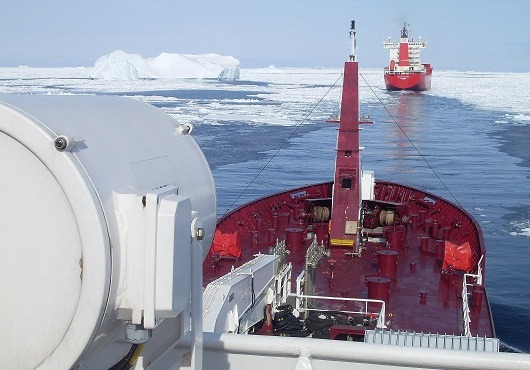
(www.MaritimeCyprus.com) The Polar Code will enter into force on Jan. 1, 2017. The applicability of the Polar Code is more complex than other Codes because it builds upon three conventions – SOLAS, several annexes of MARPOL and STCW. This post aims to clarify the applicability of the Polar Code’s safety provisions.
The Polar Code applies to vessels which operate in polar waters. These waters include both those in Antarctica (south of 60oS) and those within the Arctic as specified in SOLAS Chapter XIV. The U.S. Arctic consists of all waters north of the 60th north parallel, starting from the western coast of Alaska, through the Etolin Straight toward Russia. The ports of Anchorage and Valdez, along with all other waters south and west of the Etolin Straight, are not within polar waters.
The safety provisions of the Polar Code are incorporated by SOLAS Chapter XIV which states that vessels “operating in polar waters, certified in accordance with chapter I” must meet the Polar Code, Part I-A. All vessels on international voyages carrying one of the certificates listed in SOLAS Chapter I, must comply with the Polar Code while in polar waters. U.S. flag vessels on domestic voyages through polar waters, or to ports or places in the U.S. Arctic, do not need to meet the provisions of Part I-A. Vessels which are not required to comply with Part I-A are still encouraged to do so while operating in or near polar waters.
Polar Code – An overview
The International Code for Ships Operating in Polar Waters, commonly known as the Polar Code, is a ship-focused code with specific provisions that enhance the design, operations, and equipment standards of vessels operating in Arctic and Antarctic waters. The Polar Code will enter into force on Jan. 1, 2017, and is divided into two Parts. Part I contains provisions incorporated through SOLAS while Part II contains MARPOL provisions. Each Part is subsequently divided into two sections. Section A of each Part contains mandatory requirements. Section B provides additional voluntary guidance. In addition to these two Parts, the Polar Code addresses manning and training requirements through a set of amendments to the STCW convention. These STCW amendments have a later entry into force date of Jan. 1, 2018.
The Polar Code then organizes specific topics into chapters which contain a set of goals, functional requirements which fulfill those goals, and regulations. Compliance with the Polar Code is achieved by either meeting the regulations listed or through alternative means which meet the functional requirements. However, because the Polar Code is a risk-based standard, many of these requirements are not highly prescriptive.
Similar to the ISPS Code, the Polar Code is based on risk assessments conducted by vessel operators. The use of this risk based approach makes the Polar Code adaptable to the large variety of vessels which may operate in polar waters. For example, a vessel which operates seasonally when hazards are low does not have to meet the same standards as vessels that operate in extreme cold and heavy ice. In this way, safety is improved without overly burdening maritime operators or communities dependent on polar marine traffic.
Read also:
IMO adopts mandatory Code for Ships Operating in Polar Waters
Draft Polar Code approved by IMO’s Marine Environment Protection Committee
Legal briefing from the UK P&I Club regarding the Polar Code














Reblogged this on Brittius.